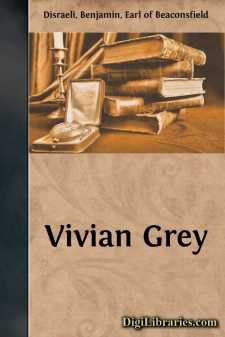Categories
- Antiques & Collectibles 13
- Architecture 36
- Art 48
- Bibles 22
- Biography & Autobiography 813
- Body, Mind & Spirit 141
- Business & Economics 28
- Children's Books 12
- Children's Fiction 9
- Computers 4
- Cooking 94
- Crafts & Hobbies 4
- Drama 346
- Education 46
- Family & Relationships 57
- Fiction 11826
- Games 19
- Gardening 17
- Health & Fitness 34
- History 1377
- House & Home 1
- Humor 147
- Juvenile Fiction 1873
- Juvenile Nonfiction 202
- Language Arts & Disciplines 88
- Law 16
- Literary Collections 686
- Literary Criticism 179
- Mathematics 13
- Medical 41
- Music 40
- Nature 179
- Non-Classifiable 1768
- Performing Arts 7
- Periodicals 1453
- Philosophy 64
- Photography 2
- Poetry 896
- Political Science 203
- Psychology 42
- Reference 154
- Religion 513
- Science 126
- Self-Help 83
- Social Science 81
- Sports & Recreation 34
- Study Aids 3
- Technology & Engineering 59
- Transportation 23
- Travel 463
- True Crime 29
Henrietta Temple A Love Story
Categories:
Description:
Excerpt
CHAPTER I.
Some Account of the Family of Armine, and
Especially of Sir Ferdinand and of Sir Ratcliffe.
THE family of Armine entered England with William the Norman. Ralph d'Armyn was standard-bearer of the Conqueror, and shared prodigally in the plunder, as appears by Doomsday Book. At the time of the general survey the family of Ermyn, or Armyn, possessed numerous manors in Nottinghamshire, and several in the shire of Lincoln. William D'Armyn, lord of the honour of Armyn, was one of the subscribing Barons to the Great Charter. His predecessor died in the Holy Land before Ascalon. A succession of stout barons and valiant knights maintained the high fortunes of the family; and in the course of the various struggles with France they obtained possession of several fair castles in Guienne and Gascony. In the Wars of the Roses the Armyns sided with the house of Lancaster. Ferdinand Armyn, who shared the exile of Henry the Seventh, was knighted on Bosworth Field, and soon after created Earl of Tewkesbury. Faithful to the Church, the second Lord Tewkesbury became involved in one of those numerous risings that harassed the last years of Henry the Eighth. The rebellion was unsuccessful, Lord Tewkesbury was beheaded, his blood attainted, and his numerous estates forfeited to the Crown. A younger branch of the family, who had adopted Protestantism, married the daughter of Sir Francis Walsingham, and attracted, by his talents in negotiation, the notice of Queen Elizabeth. He was sent on a secret mission to the Low Countries, where, having greatly distinguished himself, he obtained on his return the restoration of the family estate of Armine, in Nottinghamshire, to which he retired after an eminently prosperous career, and amused the latter years of his life in the construction of a family mansion, built in that national style of architecture since described by the name of his royal mistress, at once magnificent and convenient. His son, Sir Walsingham Armine, figured in the first batch of baronets under James the First.
During the memorable struggle between the Crown and the Commons, in the reign of the unhappy Charles, the Armine family became distinguished Cavaliers. The second Sir Walsingham raised a troop of horse, and gained great credit by charging at the head of his regiment and defeating Sir Arthur Haselrigg's Cuirassiers. It was the first time that that impenetrable band had been taught to fly; but the conqueror was covered with wounds. The same Sir Walsingham also successfully defended Armine House against the Commons, and commanded the cavalry at the battle of Newbury, where two of his brothers were slain. For these various services and sufferings Sir Walsingham was advanced to the dignity of a baron of the realm, by the title of Lord Armine, of Armine, in the county of Nottingham. He died without issue, but the baronetcy devolved on his youngest brother, Sir Ferdinando.
The Armine family, who had relapsed into popery, followed the fortunes of the second James, and the head of the house died at St....












